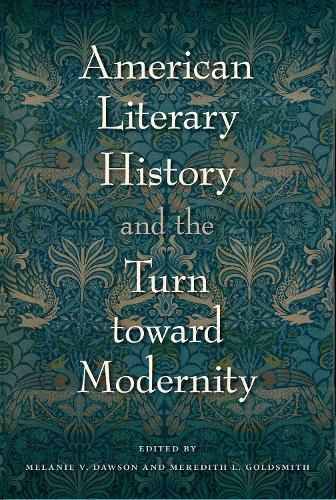Readings Newsletter
Become a Readings Member to make your shopping experience even easier.
Sign in or sign up for free!
You’re not far away from qualifying for FREE standard shipping within Australia
You’ve qualified for FREE standard shipping within Australia
The cart is loading…






This title is printed to order. This book may have been self-published. If so, we cannot guarantee the quality of the content. In the main most books will have gone through the editing process however some may not. We therefore suggest that you be aware of this before ordering this book. If in doubt check either the author or publisher’s details as we are unable to accept any returns unless they are faulty. Please contact us if you have any questions.
The years between 1880 and 1930 are usually seen as a time in which American writers replaced values and traditions of the Victorian era with wholly new works of modernist literature, and the turn of the century is typically used as a dividing line between the old and the new. Challenging this periodization, this volume argues that this entire time span should instead be studied as a coherent and complex literary field.
The essays in this volume show that these were years of experimentation, negotiation of boundaries, and hybridity?resulting in a true literature of transition. Contributors offer new readings of authors including Jack London, Edith Wharton, and Theodore Dreiser in light of their ties to both the nineteenth-century past and the emerging modernity of the twentieth century. Emphasizing the diversity of the literature of this time, contributors also examine poetry written by and for Native American students in a Westernized boarding school, the changing attitudes of authors toward marriage, turn-of-the-century feminism, dime novels, anthologies edited by late-nineteenth-century female literary historians, and fiction of the Harlem Renaissance.
Calling for readers to look both forward and backward at the cultural contexts of these works and to be mindful of the elastic categories of this era, this volume demonstrates the plurality and the tensions characteristic of American literature during the century’s long turn.
$9.00 standard shipping within Australia
FREE standard shipping within Australia for orders over $100.00
Express & International shipping calculated at checkout
This title is printed to order. This book may have been self-published. If so, we cannot guarantee the quality of the content. In the main most books will have gone through the editing process however some may not. We therefore suggest that you be aware of this before ordering this book. If in doubt check either the author or publisher’s details as we are unable to accept any returns unless they are faulty. Please contact us if you have any questions.
The years between 1880 and 1930 are usually seen as a time in which American writers replaced values and traditions of the Victorian era with wholly new works of modernist literature, and the turn of the century is typically used as a dividing line between the old and the new. Challenging this periodization, this volume argues that this entire time span should instead be studied as a coherent and complex literary field.
The essays in this volume show that these were years of experimentation, negotiation of boundaries, and hybridity?resulting in a true literature of transition. Contributors offer new readings of authors including Jack London, Edith Wharton, and Theodore Dreiser in light of their ties to both the nineteenth-century past and the emerging modernity of the twentieth century. Emphasizing the diversity of the literature of this time, contributors also examine poetry written by and for Native American students in a Westernized boarding school, the changing attitudes of authors toward marriage, turn-of-the-century feminism, dime novels, anthologies edited by late-nineteenth-century female literary historians, and fiction of the Harlem Renaissance.
Calling for readers to look both forward and backward at the cultural contexts of these works and to be mindful of the elastic categories of this era, this volume demonstrates the plurality and the tensions characteristic of American literature during the century’s long turn.